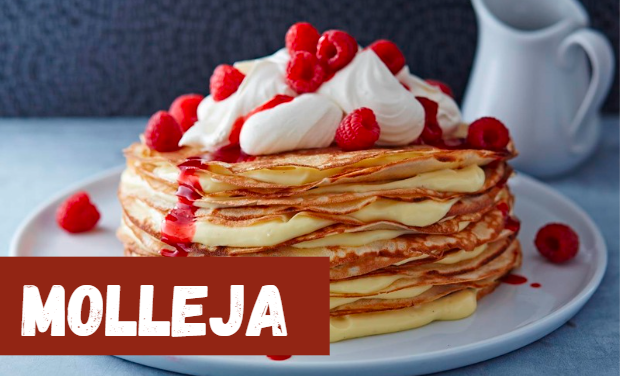Contents
Introduction
Molleja, also known as sweetbread, is a culinary delicacy enjoyed by food enthusiasts around the globe. It refers specifically to the thymus gland and pancreas of beef cattle. Molleja is cherished for its unique texture and flavor, offering a gastronomic experience that transcends the ordinary.
In this comprehensive guide, we will explore everything about molleja, from its origins and nutritional value to cooking techniques and recipes. Whether you’re a seasoned chef or a curious foodie, this article will provide you with valuable insights and inspire you to savor this exquisite dish.
What is Molleja?
Molleja, or sweetbread, primarily refers to two types of glands in beef cattle:
- Thymus (Corazón or Heart): This part of the molleja is smoother, less fatty, and more flavorful compared to the pancreas. It is highly sought after for its tender texture and rich taste.
- Pancreas (Cuello or Neck): The pancreas is known for its distinct, more robust flavor and slightly coarser texture. It is often used in a variety of traditional dishes.
Both parts of the molleja offer unique culinary experiences, making them versatile ingredients in gourmet cooking.
The Origins and History of Molleja
Molleja has a rich culinary history, with its roots tracing back to ancient times. Historically, it was considered a delicacy among European aristocracy, especially in France and Spain. Over time, it found its way into various cuisines around the world, including Argentine, Mexican, and American culinary traditions.
European Influence
In Europe, particularly in France, molleja has been a staple in haute cuisine for centuries. French chefs have long prized sweetbreads for their delicate texture and ability to absorb flavors. Classic dishes like “Ris de Veau à la Financière” showcase the elegance and versatility of molleja.
Latin American Tradition
In Latin America, especially in Argentina, molleja is a beloved component of traditional asado (barbecue). Argentine chefs and home cooks alike grill sweetbreads to perfection, often serving them with chimichurri sauce. This method of preparation highlights the natural flavors and creates a crispy exterior while maintaining a tender interior.
Nutritional Value of Molleja
Molleja is not only a culinary delight but also a source of various nutrients. It is rich in protein, vitamins, and minerals, making it a valuable addition to a balanced diet.
Macronutrients
- Protein: Molleja is an excellent source of high-quality protein, essential for muscle growth and repair.
- Fats: While it contains some fats, these are primarily healthy fats that provide energy and support cellular function.
Micronutrients
- Vitamins: Molleja is rich in vitamins such as Vitamin B12, which is crucial for red blood cell formation and neurological function.
- Minerals: It contains essential minerals like iron, zinc, and selenium, which play vital roles in various bodily processes.
Health Benefits of Molleja
Including molleja in your diet can offer several health benefits, provided it is consumed in moderation and prepared healthily.
Supports Muscle Health
The high protein content in molleja supports muscle growth and repair, making it an excellent choice for athletes and fitness enthusiasts.
Boosts Immunity
Vitamins and minerals found in molleja, such as zinc and selenium, contribute to a robust immune system, helping the body fight off infections and diseases.
Promotes Brain Health
Vitamin B12 in molleja is essential for maintaining healthy brain function and preventing neurological disorders.
Culinary Uses of Molleja
Molleja’s unique texture and flavor make it a versatile ingredient in the kitchen. Here are some popular ways to prepare and enjoy molleja.
Grilled Molleja
Grilling is one of the most popular methods of preparing molleja, especially in Argentina. The process involves:
- Cleaning: Thoroughly clean the molleja to remove any impurities.
- Marinating: Marinate the sweetbreads with olive oil, garlic, and herbs for enhanced flavor.
- Grilling: Grill over medium-high heat until the exterior is crispy and golden brown, and the interior is tender.
Sautéed Molleja
Sautéing is another excellent method to prepare molleja, allowing the natural flavors to shine through.
- Cleaning: Clean the sweetbreads thoroughly.
- Blanching: Briefly blanch the molleja in boiling water to firm up the texture.
- Sautéing: Sauté in a hot pan with butter, garlic, and fresh herbs until golden brown.
Braised Molleja
Braised molleja offers a rich, flavorful dish perfect for special occasions.
- Cleaning: Clean the sweetbreads thoroughly.
- Browning: Brown the molleja in a hot pan with oil.
- Braising: Simmer in a flavorful broth with vegetables and spices until tender.
Recipes to Try
Here are some delicious molleja recipes to elevate your culinary repertoire.
Grilled Molleja with Chimichurri
Ingredients:
- 1 pound of molleja (thymus or pancreas)
- 2 tablespoons olive oil
- 3 cloves garlic, minced
- Salt and pepper to taste
- Chimichurri sauce for serving
Instructions:
- Clean and marinate the molleja with olive oil, garlic, salt, and pepper.
- Preheat the grill to medium-high heat.
- Grill the molleja for 10-15 minutes, turning occasionally until crispy and golden brown.
- Serve with chimichurri sauce.
Sautéed Molleja with Mushrooms
Ingredients:
- 1 pound of molleja (thymus or pancreas)
- 2 tablespoons butter
- 1 shallot, finely chopped
- 8 ounces mushrooms, sliced
- 1/4 cup white wine
- Salt and pepper to taste
Instructions:
- Clean and blanch the molleja.
- Sauté the shallot in butter until translucent.
- Add the molleja and mushrooms, sautéing until golden brown.
- Deglaze with white wine, season with salt and pepper, and simmer until the liquid reduces.
Braised Molleja with Vegetables
Ingredients:
- 1 pound of molleja (thymus or pancreas)
- 2 tablespoons olive oil
- 1 onion, chopped
- 2 carrots, sliced
- 2 celery stalks, sliced
- 4 cups beef broth
- Salt and pepper to taste
Instructions:
- Clean and brown the molleja in olive oil.
- Add the onion, carrots, and celery, sautéing until softened.
- Pour in the beef broth, season with salt and pepper, and bring to a simmer.
- Cover and braise for 1-2 hours until the molleja is tender.
Cooking Tips and Techniques
To ensure the best results when cooking molleja, consider these tips and techniques:
Cleaning and Preparing Molleja
- Soaking: Soak the molleja in cold water for a few hours to remove blood and impurities.
- Blanching: Blanching in boiling water helps firm up the texture and makes it easier to handle.
- Peeling: After blanching, peel off the outer membrane for a smoother texture.
Marinating for Flavor
Marinating molleja enhances its natural flavors. Use a combination of olive oil, garlic, herbs, and spices for the best results.
Cooking Methods
- Grilling: Ideal for achieving a crispy exterior and tender interior.
- Sautéing: Perfect for a quick, flavorful dish.
- Braising: Best for creating rich, comforting meals.
Cultural Significance of Molleja
Molleja holds a special place in various culinary traditions around the world. In Argentina, it is a must-have at any asado, reflecting the country’s love for beef and barbecue. In France, sweetbreads are a symbol of haute cuisine, showcasing the artistry and skill of French chefs. Understanding the cultural significance of molleja adds depth to its appreciation and enjoyment.
FAQs about Molleja
What is molleja?
Molleja, or sweetbread, refers to the thymus gland and pancreas of beef cattle. It is cherished for its unique texture and rich flavor.
How is molleja typically prepared?
Molleja can be grilled, sautéed, or braised. Each method offers a different culinary experience, allowing the natural flavors and textures to shine.
Is molleja healthy?
Molleja is a good source of protein, vitamins, and minerals. When consumed in moderation and prepared healthily, it can be part of a balanced diet.
Where can I buy molleja?
Molleja can be found at specialty butcher shops, Latin American markets, and some gourmet grocery stores. It’s also available online from various meat suppliers.
Can I freeze molleja?
Yes, molleja can be frozen for later use. Clean and prepare it before freezing to maintain its quality.
Conclusion
Molleja is a culinary gem that deserves a place in every food lover’s repertoire. Its rich history, unique flavor, and versatility make it a standout ingredient in various cuisines. Whether you prefer it grilled, sautéed, or braised, molleja offers a gastronomic experience like no other.
By understanding its origins, nutritional value, and cooking techniques, you can fully appreciate and enjoy this exquisite delicacy. So, why not add molleja to your next meal and savor the flavors of this timeless culinary treasure?




